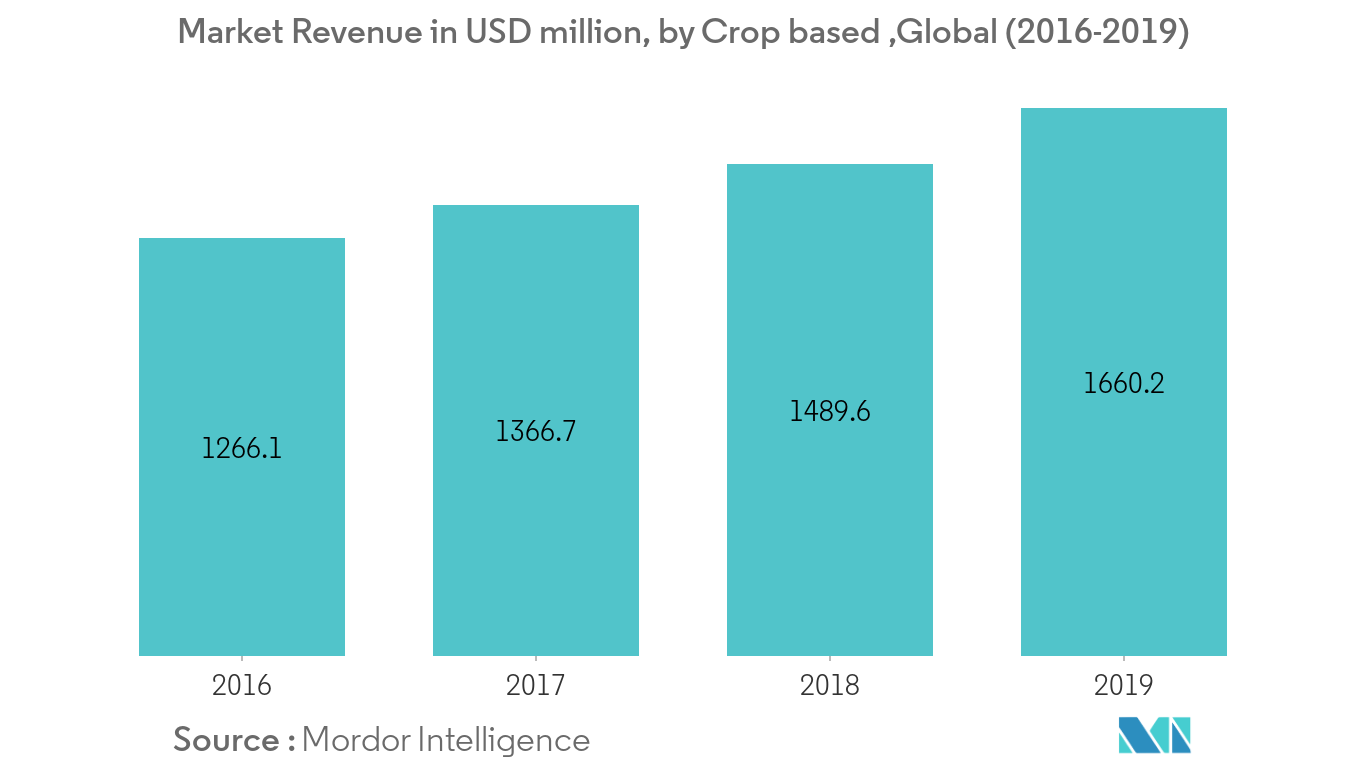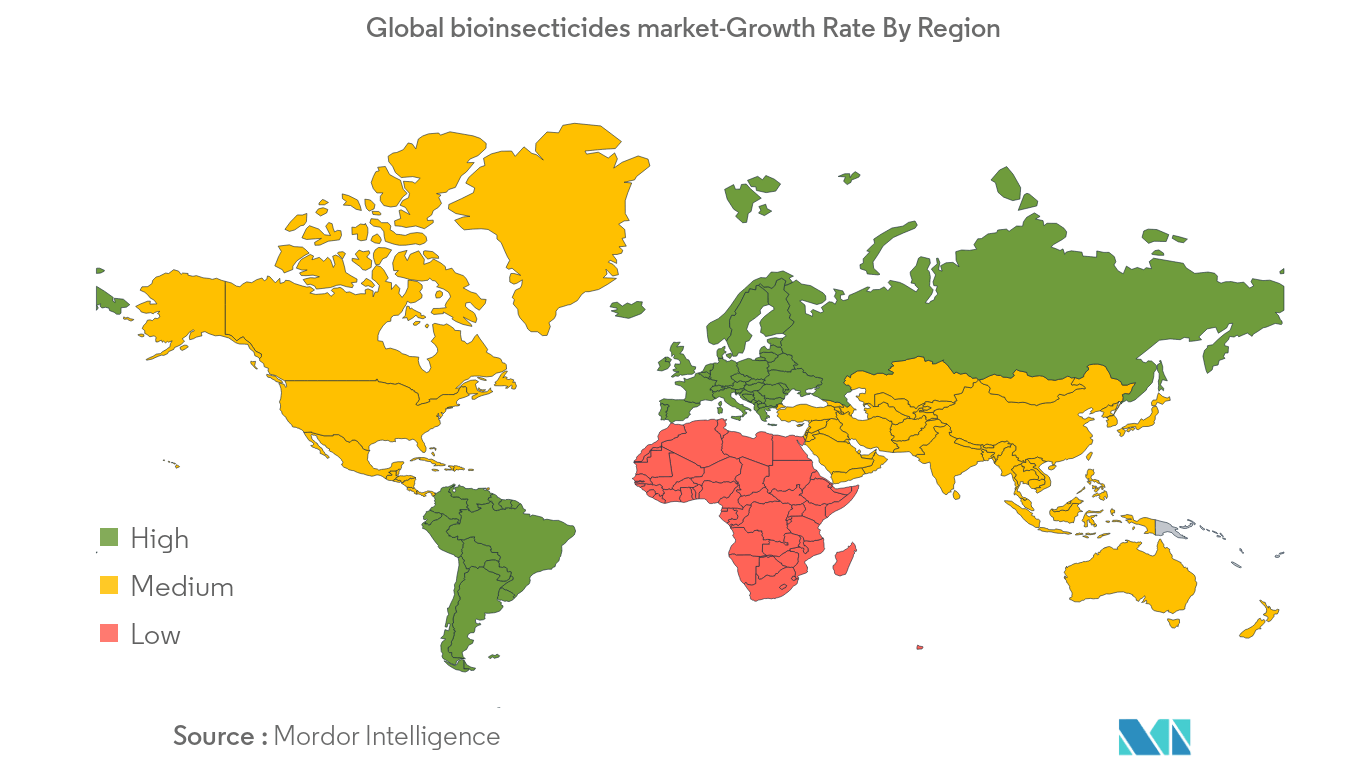Market Trends of Global Bioinsecticide Industry
This section covers the major market trends shaping the Bioinsecticides Market according to our research experts:
Fruits and Vegetables Occupy the Largest Share By Application
Among application areas for bioinsecticides, fruits and vegetables occupy the largest share by application. Our analysis shows that lately, many fruits and vegetables have tested positive for the presence of pesticides. This has decreased the demand for chemical pesticide-treated fruits and vegetables. Bioinsecticides have a relatively lower residue level and are a perfect fit for the treatment of fruits and vegetables and hence fruit and vegetable forms the largest application area for bioinsecticides. In general, biocontrol producers represent around 1% of the chemical pesticide sales. Biocontrol agents for weeds are nor marketed. Thus, considering that in the market, there are only biocontrol agents for insects and plant diseases, the percentage of that market share rises to 2%. Optimistic estimates project that sales of biopesticides could reach 10% by 2020.

South America is the Fastest Growing Market for Bioinsecticides
South America is estimated to witness the highest CAGR in the forecast period of 2019-2024. In South America, Bt-based products cover about 40% of the market. Most of the bioinsecticide production in the region is carried out at the local level, with the involvement of local governments and NGOs. South America is projected to experience the fastest growth in the coming five years, driven by rapidly emerging resistance among insects. Brazil has accounted for the largest share of the market in South America in the past five years. Approximately, the 40 commercial mycoinsecticides present in the Brazilian market are provided by 19 for-profit companies. In Brazil, where there is an overwhelming need to improve soil health and crop productivity, microbial science in agriculture is just getting started. Currently, imported products based on Bt are used in Argentina to control Rachiplusia nu and A. gemmatalis. However, their use is not extensive, since the market is dominated by chemical pesticides, particularly pyrethroids. Research on these products is still hampered by the severe economic crisis faced in recent years


